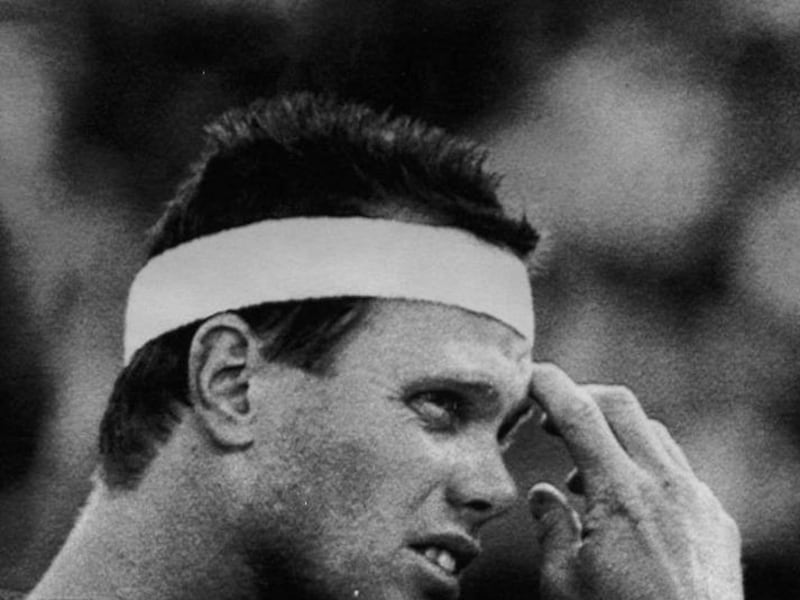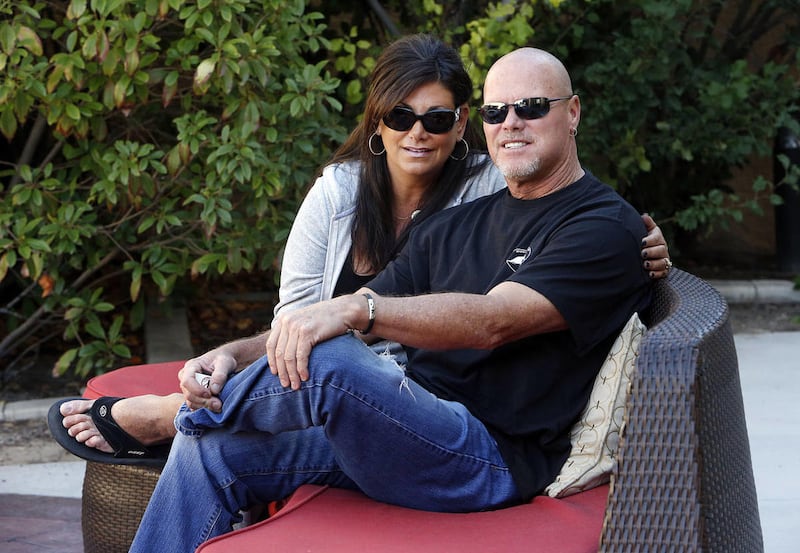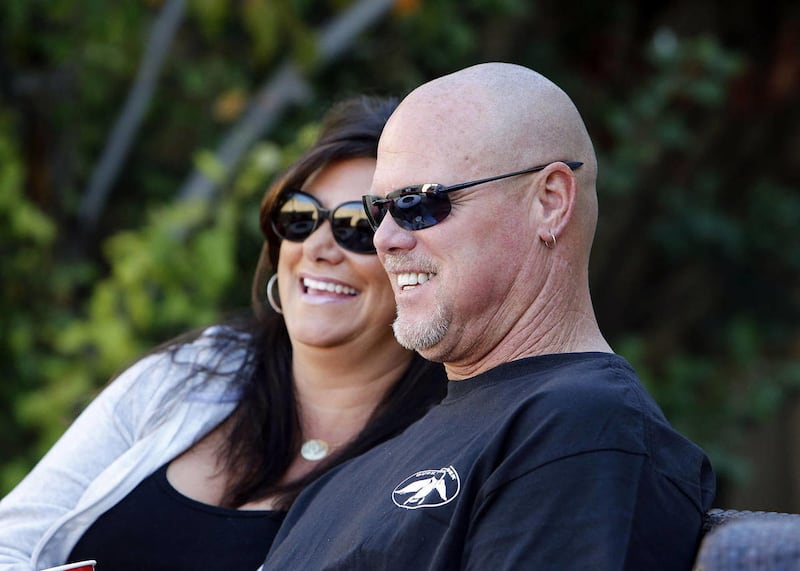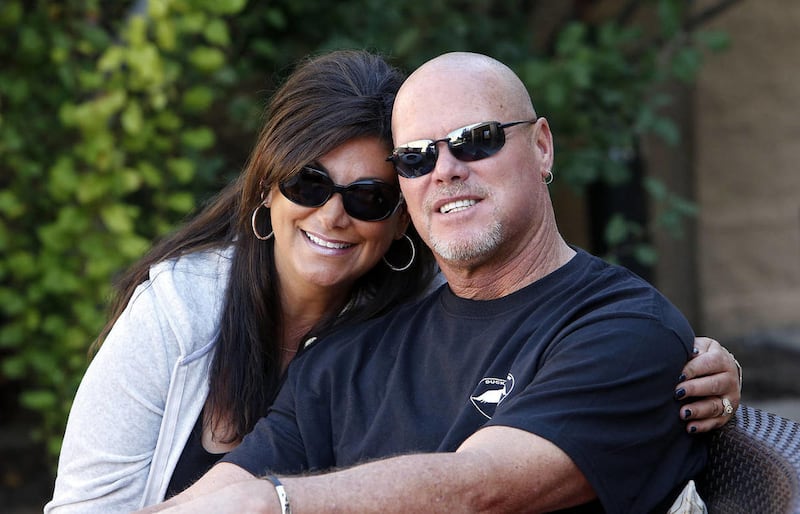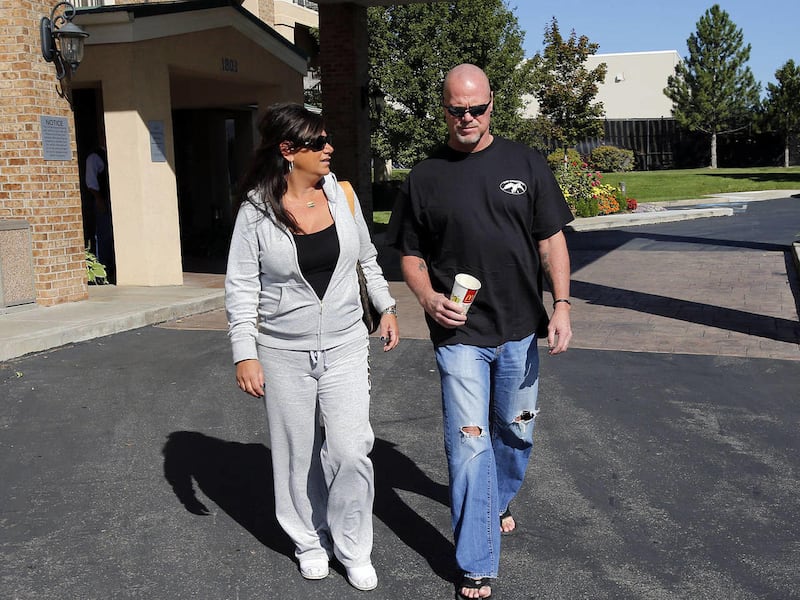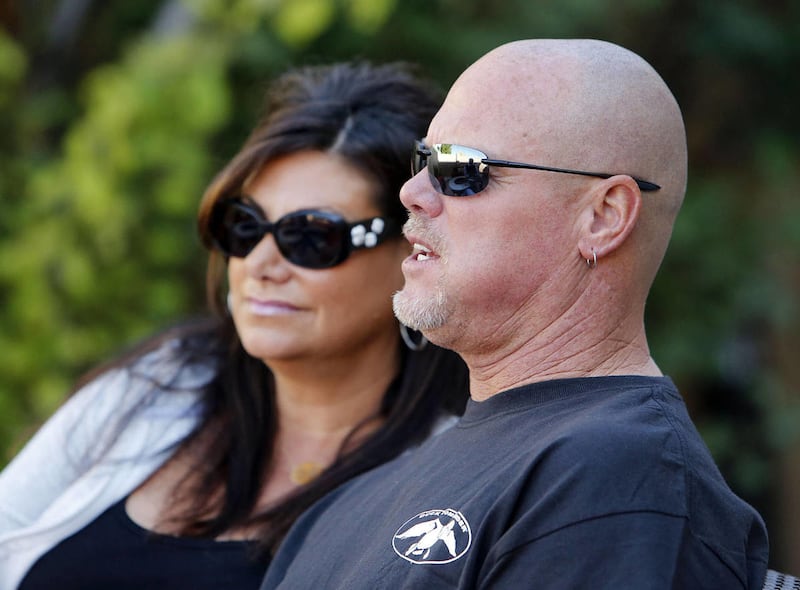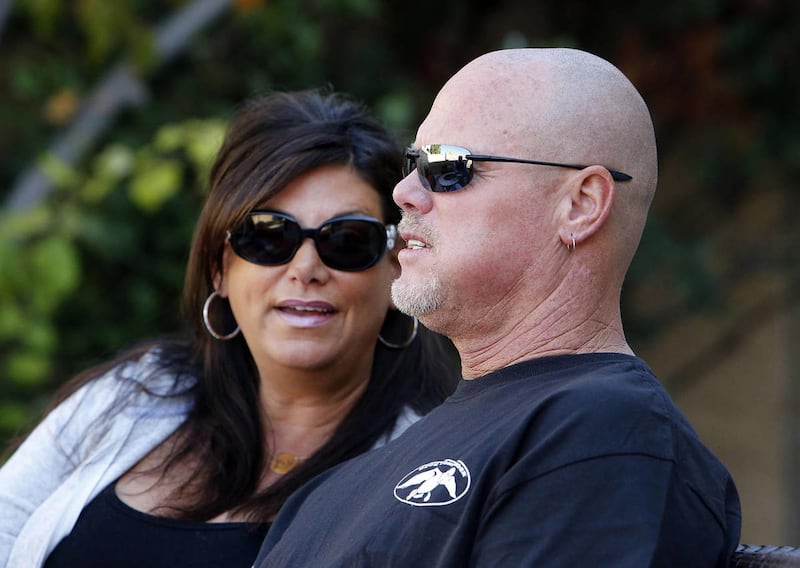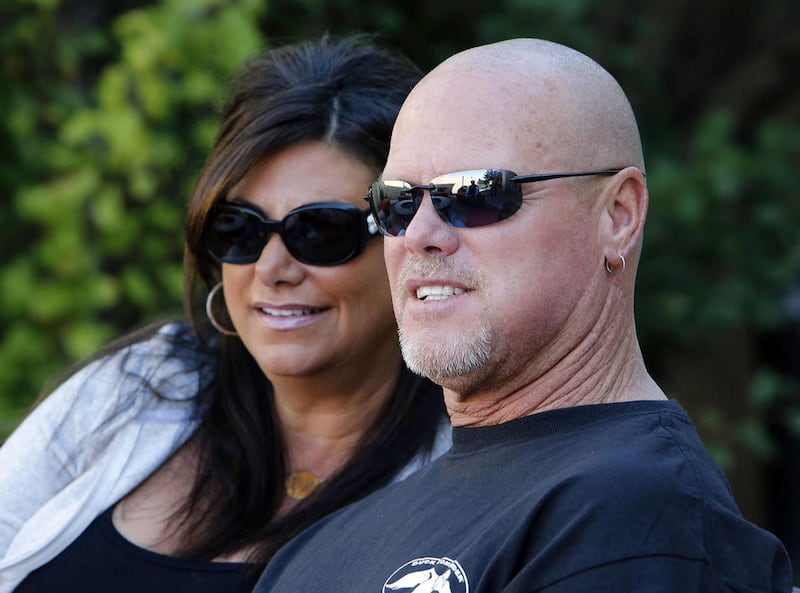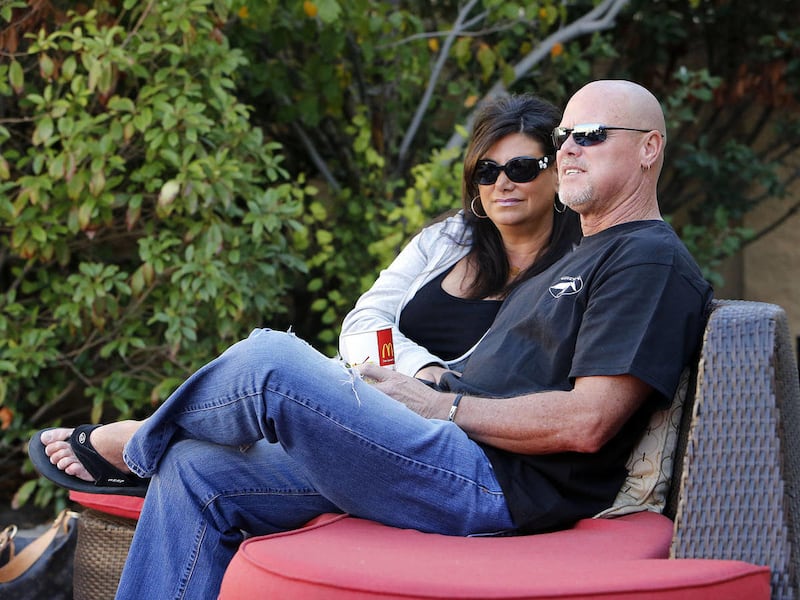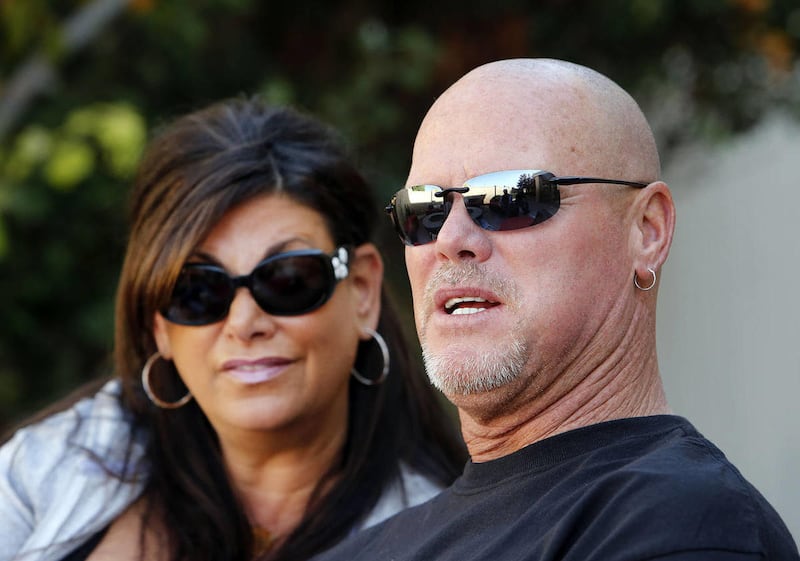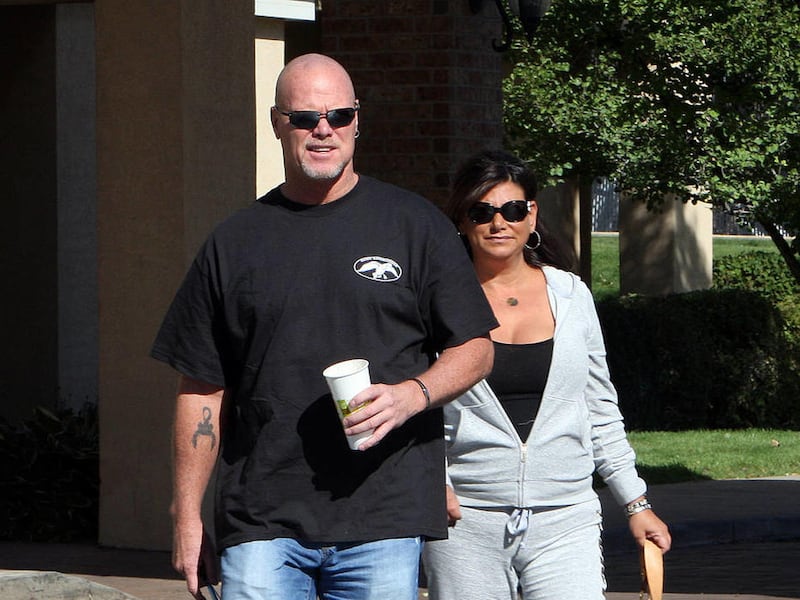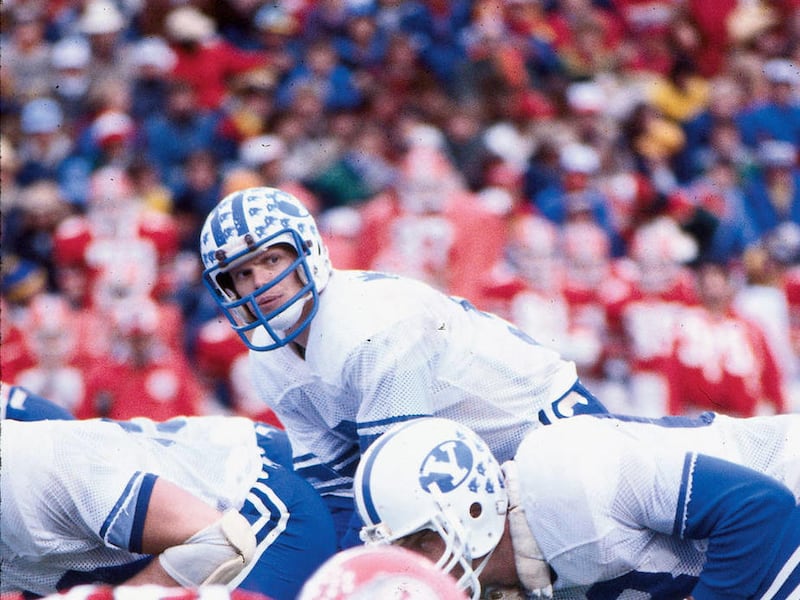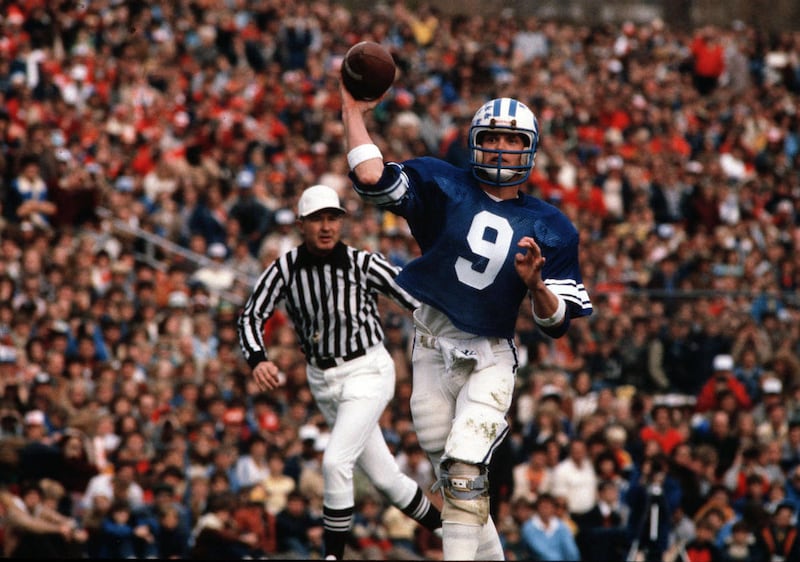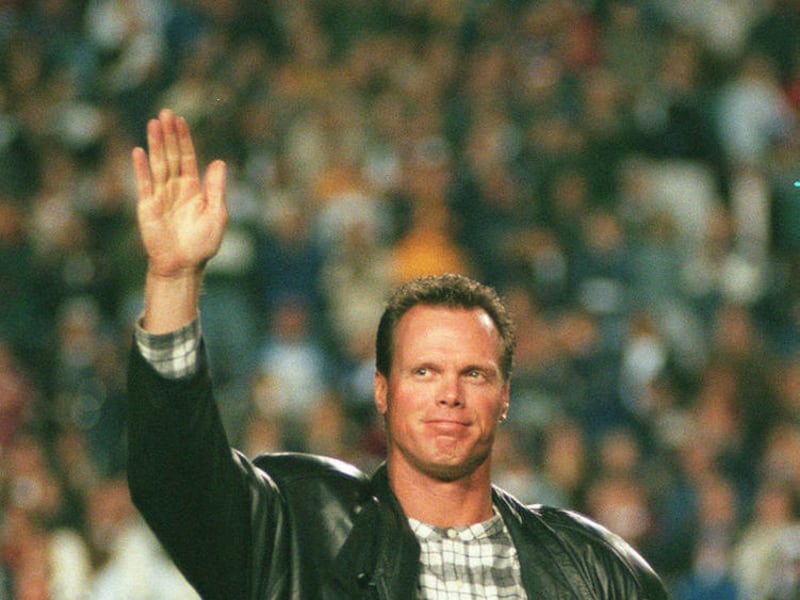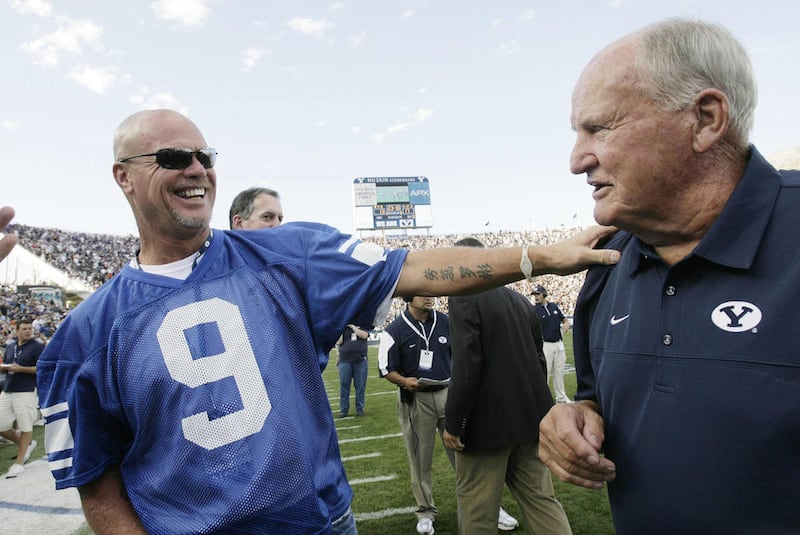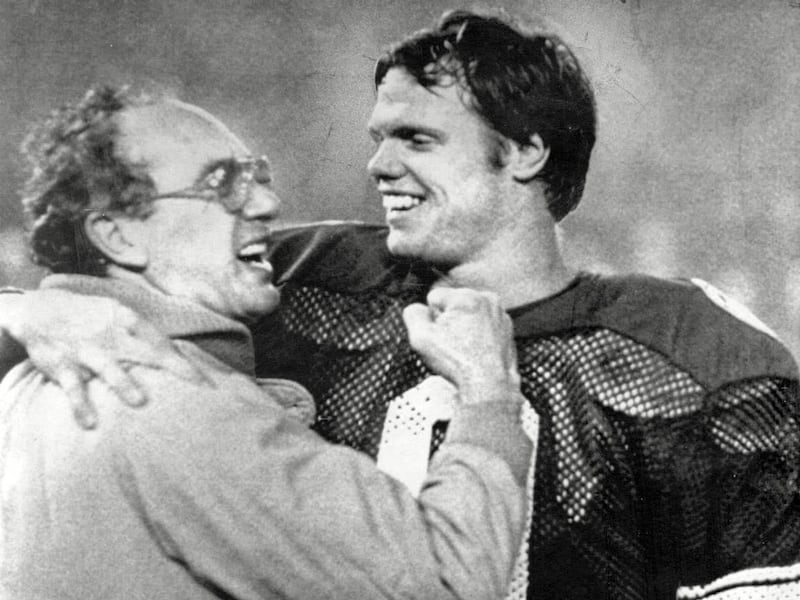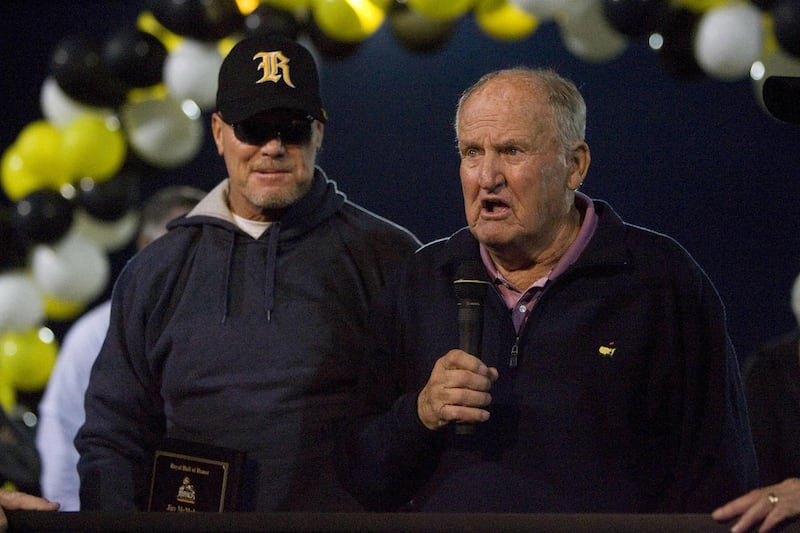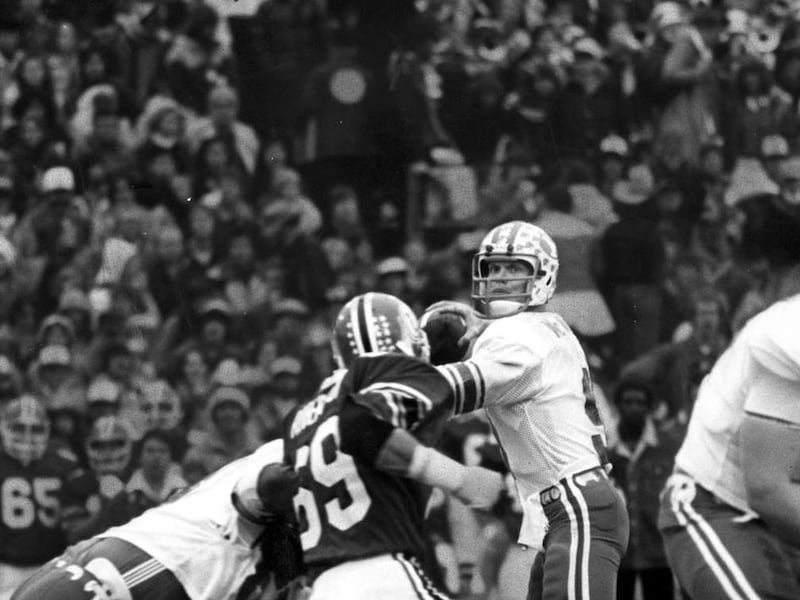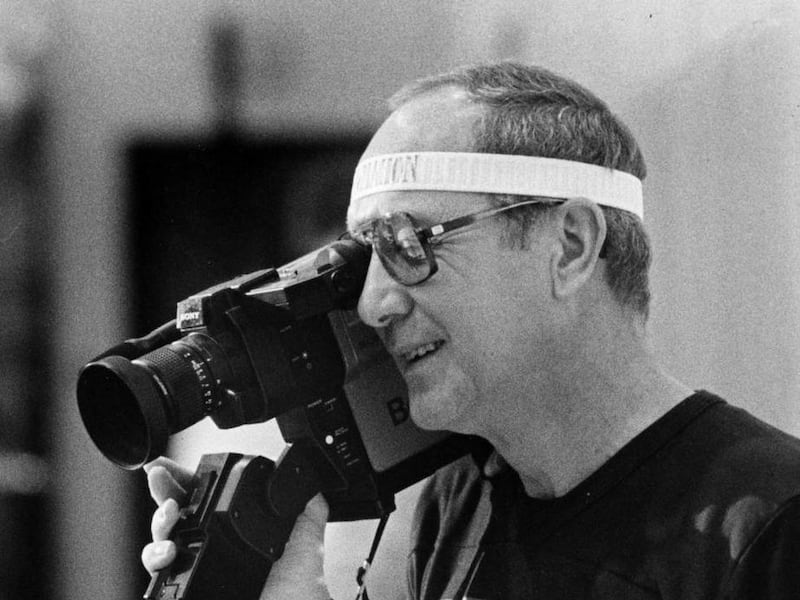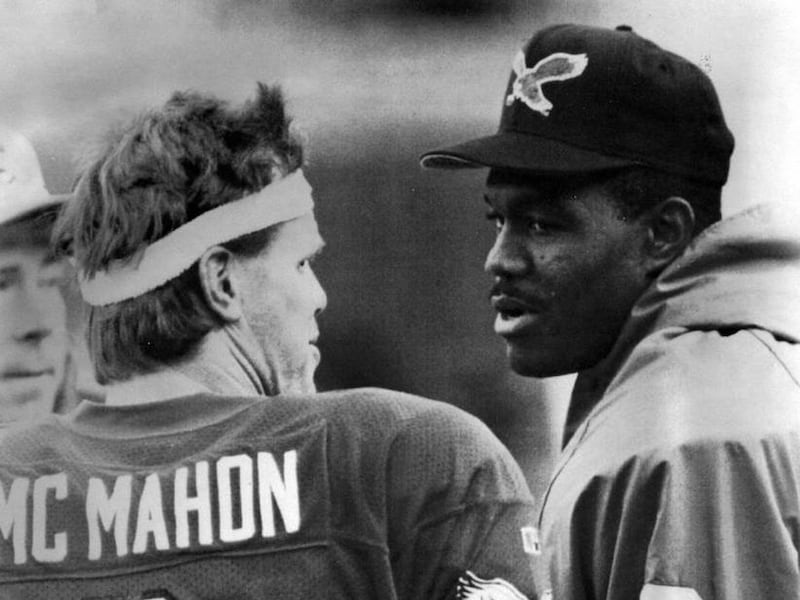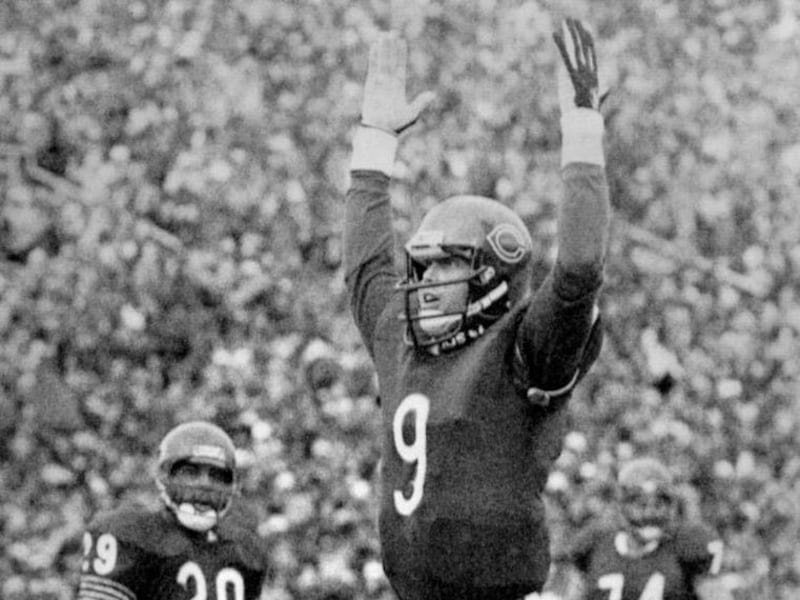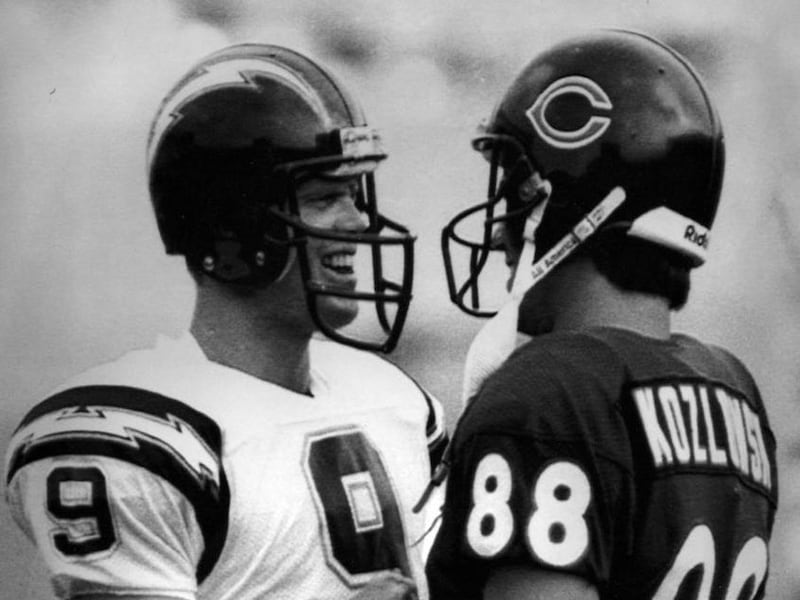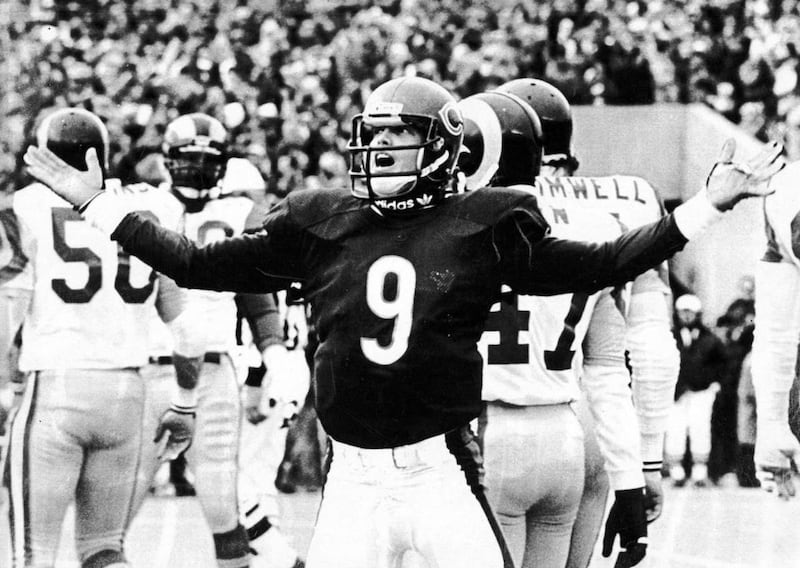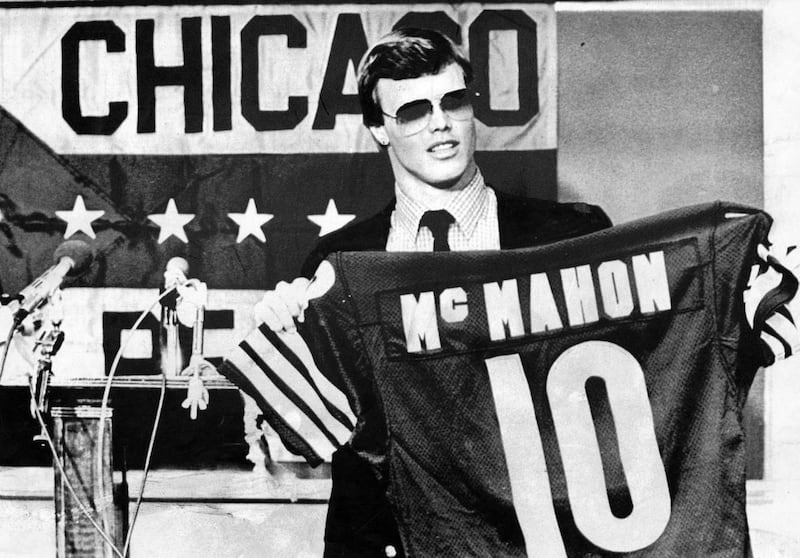My head was hurting so bad I didn't want to do anything. She'd always say, 'You coming out of the room today?' And I'd say, 'No, not unless I have to go do something. – Former BYU and NFL quarterback Jim McMahon
Jim McMahon has never been one to back down from a challenge.
Whether it was overcoming a freakish boyhood accident that nearly ruined his vision in one eye, being a free-spirited Catholic who attended LDS Church-owned Brigham Young University and wound up with a record-shattering career that included arguably the greatest comeback victory in college football history, or helping lead the Chicago Bears to the only Super Bowl championship in franchise history, the former BYU and NFL quarterback has always tackled the obstacles he's faced in his life head-on — often times literally.
And now that he's battling the toughest challenge he's ever faced in his life, McMahon is determined to win this fight, too.
For the past couple of years, it's been well-documented that McMahon has been dealing with severe headaches, memory loss and the early stages of dementia, brought on by concussions he sustained during his NFL career.
It's a devastating health issue, one that McMahon blames for the deaths of two of his former teammates, Dave Duerson and Andre Waters, who both committed suicide.
But now, it looks like there's light at the end of that terribly dark tunnel for McMahon.
"I had a guy in New York (Dr. Scott Rosa) that figured out I had vertebrae that was cutting off my spinal fluid. It was all backing up into my brain," he said in an interview a few days ago while in town to play in a fundraising golf tournament to improve athletic facilities at Roy High School, his alma mater. "Once they adjusted those two vertebrae and all that stuff came out, I haven't had any headaches.
"It's a non-invasive procedure. He invented a machine that does all the work. I don't know what it does, whether it's air or suction, but it just moves the vertebrae enough to let the fluid get out.
"He said, 'I can't reverse the damage that's been done,' but with all that fluid in the brain, that's what causes lesions and all these problems, all these diseases," McMahon, 54, said of Dr. Rosa's diagnosis and subsequent treatment. "He said, 'I can't reverse any of that, but I can keep the pain down as far as you're concerned. I can keep your head from filling up (with spinal fluid) all the time.'"
Badly needed relief
The treatment has been a godsend for McMahon, who's always been such a notorious fun-loving character, but found himself spending many of his days in a darkened room, lying down or watching television, because the constant, chronic headaches were so painful that he simply didn't feel like doing anything else.
"The headaches were so bad he would drop to his knees," said Laurie Navon, McMahon's devoted girlfriend of the last 7 1/2 years whom he met at a charity golf event in Fort Lauderdale, Fla.
"Oh, yeah," McMahon said. "My head was hurting so bad I didn't want to do anything. She'd always say, 'You coming out of the room today?' And I'd say, 'No, not unless I have to go do something.'
"And when I was on a plane, it was the worst. You get compressed and with the cabin pressure, I would literally have to squeeze my head for as long as the flight lasted.
"The only time I felt good is when I was laying down," he said, "and (Dr. Rosa) said that's because when you lay down and the gravity gets off you, (the spinal fluid's) moving up to where some of it would get out. But every time I was upright, it was constantly banging in my head."
And he admitted that, at times, the crippling pain, anguish and frustration got so bad that he contemplated going to that same, terribly dark place where Seau, Duerson, Waters and too many other former players found themselves — and taking his own life.
"Yeah, I did," McMahon said of his own suicidal thoughts. "Heck, it hurt so bad I'm like, 'Hey, I don't want to keep doing this every day.' ... You don't know what to do when your brain starts messing with you. And if they're getting the same kind of pain that I was having, I understand why these guys do that."
"There are no knives, no guns, no nothing in the house," Navon said.
Thankfully, McMahon's innovative treatment is giving them hope for the future.
"It can't cure the dementia," Navon said, "but it can help with all the symptoms that he was having, which were really bad, and hopefully slow down the progression of the dementia.
"I've seen huge improvement in him. After Dr. Rosa did that treatment on Mac, I looked at Jim and he looked at me, and all of a sudden, crazy as it may sound, he had color his face, his eyes looked clearer and Dr. (Raymond) Damadian (who invented the MRI) said he could tell an immediate difference in his speech. Mac said he felt like a toilet bowl had been flushed in his head and everything came out.
"It's definitely made a huge difference," she said. "He's not so ornery. His mood swings were crazy; he was high and he was low. ... We went back and Dr. Damadian did the same exact scans again and he thinks all that fluid that was in his brain is now flowing up and back, up and back the way it should in all of us."
"I thought she was the cause of most of the headaches," McMahon said sarcastically of Navon, admitting that, upon further review, maybe she was responsible for "only about half of them."
Navon has noticed some recent signs, though, that the time has come for McMahon to receive more treatment. He has sent some of his former teammates to the doctors who treated him and he, too, admits that things are started to get "a little fuzzy" for him again.
"I mean, I saw a change in Mac probably like three or four months ago," she said. "He definitely needs to go back. One of the first signs is a change in moods, which he has. He gets irritated easily, cursing, yelling for no reason.
"So I know now and I see him rubbing his head too much. I know his memory is slipping, and he needs to go back."
Settling with the NFL
McMahon was part of a lawsuit that was filed against the NFL in 2011, seeking compensation for former players who had suffered concussion-related brain damage, which they accused the league of concealing, misdiagnosing or flat-out ignoring.
NFL teams used to rush concussed players back on the field by simply holding a couple of fingers in front of their face and asking them how many they could see, or waiving a finger back and forth and making sure they could follow it. Back in the day, smelling salts were used to clear a player's foggy head before sending him back into a game.
Those days are long gone now, and the NFL settled the lawsuit in August when it agreed to pay a tentative sum of $765 million, which will be divided among the more than 4,500 players who have sustained irreversible brain damage.
McMahon will receive a portion of that settlement — how much, he has no idea yet — and is just glad that the league decided to do the right thing after decades of seemingly looking the other way when it came to players' injuries.
"I think it's a victory for the guys that are hurting bad right now, because these guys are in desperate need of help, either financially or paying doctor bills, stuff like that," he said.
"It's just a shame that some of these guys that have built this brand over the years are now, you know, they're destitute. They've got nowhere to go and they don't know who to trust. And they don't remember half the people in their lives.
"The guys that are in bad shape, from what I'm hearing, that's how it's gonna break down — the guys that are in the worst shape are going to get help first, the families of guys who have already died," McMahon said. "What amounts they'll get, I have no idea.
"I've already been documented, but all those 4,500 guys that jumped on the bandwagon, they're going to have to prove there's something wrong. They're going to have to go through testing, go through the MRIs and all the stuff that I've already done."
BYU, NFL superstar
McMahon, of course, was a multisport star at Roy High School in Northern Utah, where his family moved prior to his junior year. He not only helped lead the Royals' football team to a combined record of 18-3 in 1975-76, but he was also a superb performer in basketball and baseball before his graduation in 1977.
Then it was on to BYU, where he set an incredible 70 NCAA records as the triggerman of LaVell Edwards' high-powered offense. In all, he threw for 9,536 yards and 84 touchdowns in his collegiate career, leading the Cougars to bowl game victories in his junior and senior seasons, and was elected to the College Football Hall of Fame in 1999.
McMahon's most notable win at BYU came in the 1980 Holiday Bowl, when he rallied BYU from a 20-point deficit in the final four minutes. Trailing 45-25, the gritty McMahon refused to quit, at one point sending the punt team off the field on a fourth-down play, and engineered an amazing comeback. He connected on a 41-yard Hail Mary TD pass to Clay Brown as time expired to complete the Cougars' improbable and memorable 46-45 victory over SMU.
No wonder grateful BYU fans call it the "Miracle Bowl."
In 1982, he was selected in the first round of the NFL draft by the Chicago Bears, where his spunk and rebellious nature got him crossways at times with the team's front office and head coach Mike Ditka, but where his talent, leadership and competitive spirit earned him the starting quarterback job and NFC Offensive Rookie of the Year honors in his first season.
By 1985, McMahon and the Bears were the best team in the NFL, piling up a near-perfect 15-1 record in the regular season and then steamrolling their way through the playoffs. They came up with their delightful "Super Bowl Shuffle" video, starring McMahon as the "punky QB," and capped that season with a 46-10 championship romp over the New England Patriots in a game that saw Jimmy Mac become the first quarterback in history to rush for two touchdowns in the Super Bowl.
McMahon was in full-on, bad-boy mode back then, clashing with then-NFL commissioner Pete Rozelle over the quarterback's wearing of a headband on the sidelines and mooning a media helicopter during practice after reports surfaced that he had suffered a serious injury to his buttocks during the NFC championship game.
That was the zenith of his NFL career although, during one stretch from 1984-87, he won what was then a record 22 consecutive regular-season starts. After feuding with Ditka and the front office, he was traded to the San Diego Chargers in 1989 and later spent time with the Philadelphia Eagles — winning the NFL's Comeback Player of the Year award in 1991 — Minnesota Vikings, Arizona Cardinals, Cleveland Browns and Green Bay Packers. He retired following the 1996 season, when he got another Super Bowl championship ring as a backup QB with Green Bay.
When the damage was done
His concussion problems may have begun as far back as 1986, when he was dumped on his head on a vicious sack by the Packers' Charlie Martin, who body-slammed McMahon to the turf after the play was over and was subsequently ejected and suspended for two games.
That was also around the same time McMahon struggled with a sore throwing shoulder, which went misdiagnosed by team doctors for more than two months. He realized then that team doctors didn't always have the players' best interests at heart.
Still, for a guy who gave so much to the game, and received so much from it, he has few regrets.
"I don't regret playing," he said. "I regret maybe playing injured. In 1986, I never should have ever played after the first game; my shoulder was gone. My doctor kept telling me there was nothing wrong with it. We'd just won the Super Bowl and I'm trying to win two in a row, which hadn't been done in a while. So I just kept trying to play, believing that these doctors knew what the (expletive) they were talking about.
"Obviously, they were team doctors, and I had a torn labrum. I had no labrum at all; it wasn't just torn — it was gone, nothing there. (The doctor) kept telling me there was nothing wrong with it. One day I'd feel OK and I'd practice; the next day I couldn't even move my arm. The guys on the team were like, 'Hey, what's going on?' and I kept trying to explain it to 'em.
"And finally, after 10 weeks of trying to play, I went and saw Dr. Frank Job in our bye week. He told me in five minutes what the problem was," McMahon recalled. "He told me, 'Your arm's coming out of the socket because you have no labrum.' And I said I've been telling these (expletive) idiots that for 10 weeks. The team doctor actually flew out and watched my surgery, and as soon as they opened me up he went, 'Holy (expletive)!'
"I don't know if the team was saying, 'Hey, just tell him he's OK' or what. I mean, that happens all the time. Now these teams are going away from team doctors."
The pain of head injuries
But that was nothing compared to the ailments he's been dealing with the past couple of years. After all, it's one thing to go in and surgically repair a torn-up shoulder. There is no such surgery, however, for a scrambled brain.
"Until I finally realized what was going on, I couldn't remember anything," McMahon said. "I couldn't remember sitting here talking to you five minutes from now. The pressure in my head was so bad, I mean, I think everything just came and went. I didn't concentrate. I couldn't concentrate on anything.
"The doctor said the only way that you can screw up C1 and C2 (vertebrae) was if you get dumped straight on your head, the top of your head. And I said, 'Well, I can show you the film. That was 20-something years ago.' And he said, 'Well, you've been messed up since then.' The only one I remember was when Charlie Martin hit me from behind and dumped me. That was probably the start of it.
"He said, 'I don't think this is gonna last, because it's been outa whack for 20-something years," said McMahon, who pointed out that Drs. Rosa and Damadian read an article about the former quarterback's health issues and reached out to him about possible treatment to deal with it.
He and Navon are so glad they did.
"You were actually able to see on his MRI scans that his brain and his skull were pushing together because there was so much fluid in his head that it was pushing back, pushing his skull and his brain were pushing together against the back of his head," she said.
"It's incredible. When all that fluid backs up into your head, all those proteins are not good. There are a lot of bad proteins and those bad proteins attack certain areas of your brain, which can cause the dementia, Alzheimer's, (Lou Gehrig's disease) and multiple sclerosis.
"Not that they can cure dementia, Alzheimer's, ALS, MS or any of that, but they can relieve the symptoms that all these men and women are having due to those diseases," Navon said hopefully.
"They've been doing research for the last seven years on this, this very thing — multiple sclerosis, Parkinson's, all these brain-related diseases are being caused by something in the spinal column," McMahon said, "and they've figured this out."
Making things better
Navon said Mac's predicament, and his willingness to openly discuss it, is something she hopes will encourage other athletes with similar issues to seek help.
"You look at these guys, and they're so independent and they're so strong, and they don't want to admit that they have an ache or a pain," she said.
"Hopefully, if they see a guy like Jim come out and admit that he's struggling with something like this, then hopefully it will help heighten people's awareness and it will encourage other athletes to come forward and get some help as well. And it has forced the NFL and college football to make positive changes in the way concussions are dealt with."
Meanwhile, McMahon is working toward getting those final few credit hours he needs to earn his diploma from BYU, which would then allow him to have his rightful place in the school's athletic hall of fame.
"I've got two classes to go," he said, saying that when he was in school he was "smart enough to get somebody else to do my homework."
"I was gonna enroll in this math class this fall, but they told me to wait because I might qualify for special-ed math now. I might be able to pass that class — I hope — and then I'll have one other class to do, whatever I want. I'm hoping this winter I can take whatever classes I need and I should be done by next fall, hopefully."
Of the hall of fame quest, McMahon said he's "trying to do it for my dad," his 77-year-old father, Jim Sr., who lives in Mesquite, Nev., and golfs almost every day. "They're the first group off every day, at the crack of dawn."
Though he loves to golf, too, McMahon said he's not about to start playing at that time of day any time soon. "Nothing works (physically) that early in the morning," he said.
McMahon said he doesn't follow football that closely anymore, other than how some of his former teammates who are now coaching are doing.
"I check some scores here and there, see how my friends are doing," he said. "Andy Reid was my tackle at BYU and now he's doing a hell of a job in K.C. Mike Singletary and Leslie Frazier are up in Minnesota coaching; Ron Rivera is in Carolina; and Jack Del Rio (an assistant with the Broncos), they're talking about him being the new USC coach.
"That's about it — I just check up on my friends."
As for McMahon himself, he never had any desire to coach.
"That's a thankless job, those coaches," he said. "The game ain't that hard. If you've got good players, you've got a good chance."
Though McMahon has always had a well-deserved reputation as a bit of a rebellious rogue, Navon says there's a wonderful, warm and giving side to the man that people haven't always gotten to see or appreciate until recently.
"He has let people see his great, human side," she said. "He's someone everybody can relate to, not a jock, a real person who has issues like everybody else. He's no different.
"You know what? There's a very soft, sensitive, warm, loving side to him. He's so giving of his time and himself, and he does so much for charity, so many different charities. He's really very humble. He's as good as gold."
And just because he's been sacked by a devastating opponent commonly called concussion syndrome, the one-time spunky, punky QB certainly is going to do all he can to win this difficult battle — and, hopefully, help others win it, too.
EMAIL: rhollis@desnews.com

